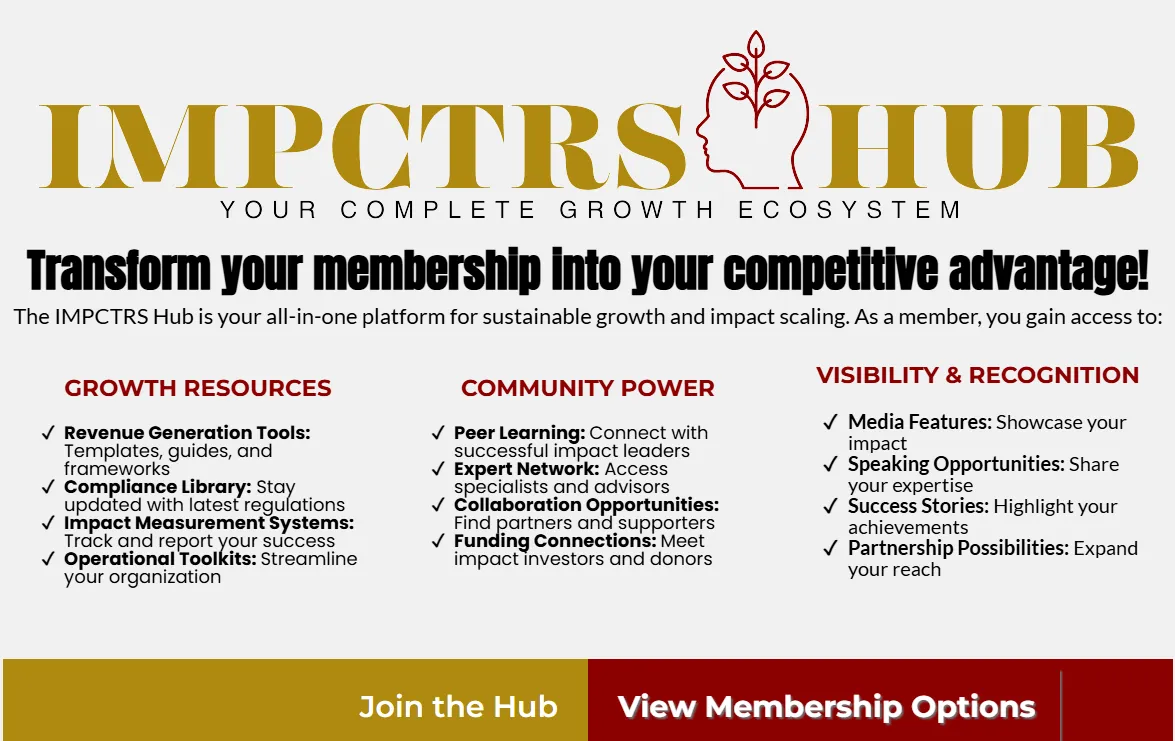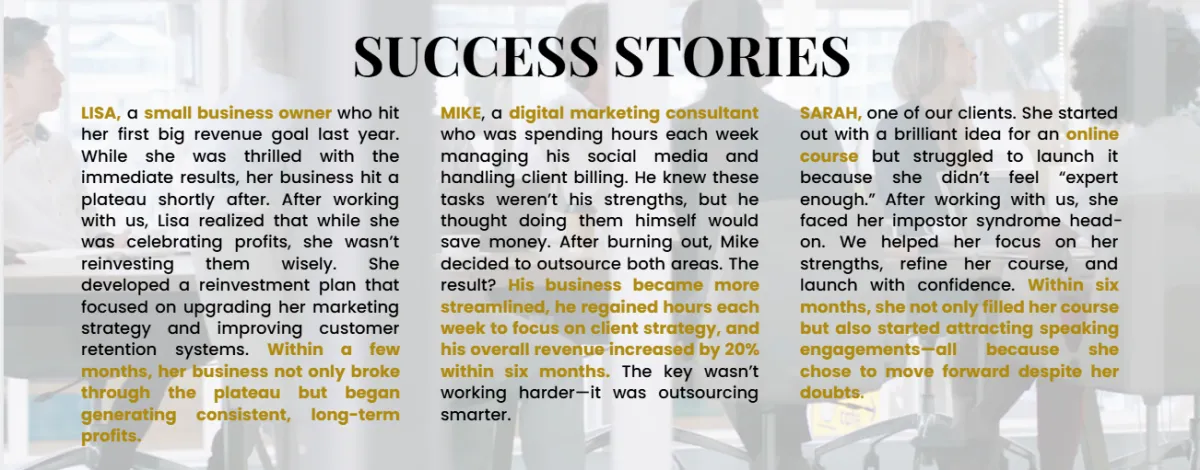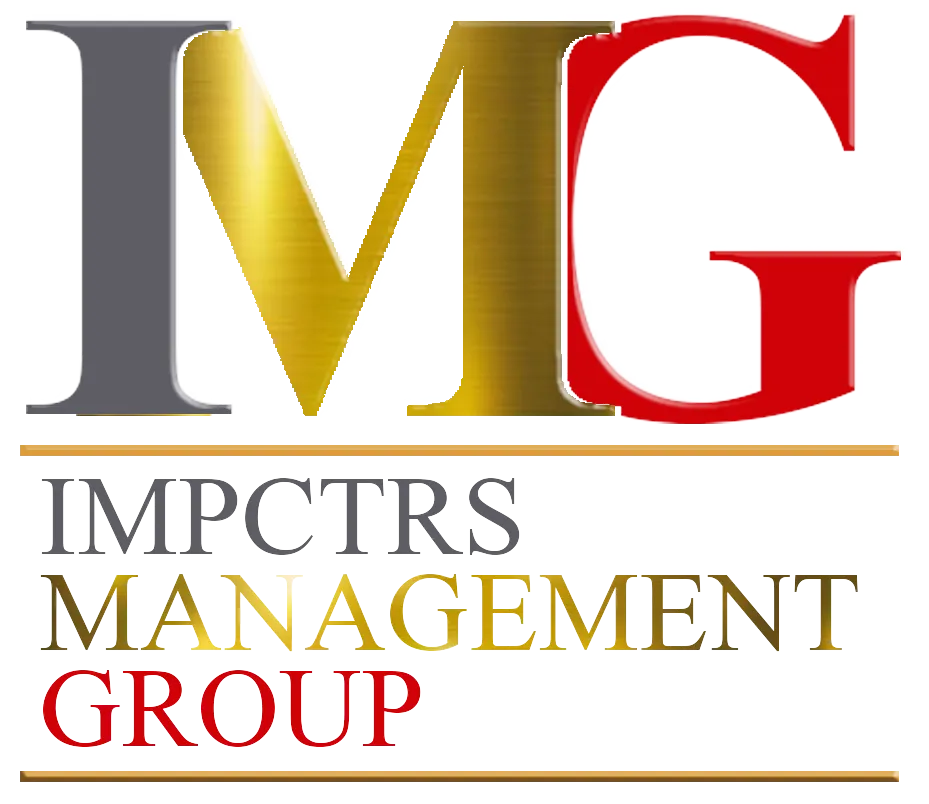See Our Latest Blogs
The Impctrs Management Group blog is where strategy meets action. We deliver powerful insights, practical strategies, and AI-driven solutions designed to help social impact businesses amplify their reach, fund their missions, and scale their operations sustainably. Every article is crafted to equip you with the knowledge and tools to lead with purpose and grow with confidence.

The Comprehensive Guide to Spring Cleaning Your Business: Revitalize, Optimize, and Grow
"Spring cleaning your business isn't about tidying up—it's about creating intentional space for growth by removing the accumulated clutter of outdated processes, inefficient systems, and unchallenged assumptions." — Tracy V. Allen
Breaking Free from Business Autopilot
As entrepreneurs and business owners, we often find ourselves caught in the whirlwind of daily operations. The very activities we once carefully designed to build and sustain our businesses gradually transform into unconscious habits—ritualistic behaviors performed without critical evaluation. This operational autopilot may keep the business functioning, but it often masks inefficiencies, outdated processes, and missed opportunities that silently drain resources and limit growth potential.
While generating revenue is certainly a positive indicator, profitability alone doesn't guarantee optimal performance. Many businesses consistently make money while simultaneously wasting significant resources through inefficient processes, underutilized tools, unnecessary expenses, and misdirected efforts. This paradox—being profitable yet inefficient—represents a critical blind spot for many business owners.
Think of your business as a garden that requires periodic maintenance to thrive. Without regular pruning, weeding, and care, even the most beautifully designed landscape eventually becomes overgrown and unproductive. Similarly, your business needs systematic evaluation and intentional optimization to maintain its health and maximize its potential.
This is where the concept of "spring cleaning" your business becomes invaluable—not as a superficial tidying exercise, but as a strategic imperative for sustainable success.
The Strategic Value of Business Spring Cleaning
Business spring cleaning represents far more than a catchy metaphor. It's a structured approach to evaluating every aspect of your operation with fresh eyes and renewed intentionality. This process offers multiple strategic benefits:
Increased Operational Efficiency
By identifying and eliminating redundant tasks, streamlining workflows, and optimizing processes, you can accomplish more with fewer resources. This efficiency translates directly to improved margins and greater capacity for growth.
Enhanced Financial Performance
A thorough cleaning reveals hidden costs, unnecessary expenditures, and underperforming investments that may be quietly eroding your bottom line. Addressing these issues can substantially improve your financial position without requiring increased sales.
Improved Strategic Focus
Clearing operational clutter creates space for strategic thinking. When you're not constantly reacting to inefficient systems, you can focus on innovation, market opportunities, and long-term growth initiatives.
Renewed Organizational Energy
The process of evaluation and improvement energizes both leaders and teams. Eliminating frustrating inefficiencies and implementing better systems creates a positive momentum that enhances overall morale and productivity.
Competitive Advantage
While competitors remain stuck in their habitual patterns, your refreshed operation can respond more nimbly to market changes, customer needs, and emerging opportunities.
The Comprehensive Business Spring Cleaning Framework
Effective business spring cleaning requires a methodical approach that examines every significant aspect of your operation. While the time investment may seem substantial—typically one to two full days for a thorough review—the returns far outweigh the cost in terms of recovered efficiency, eliminated waste, and optimized performance.
Let's explore each component of this comprehensive framework in detail:
1. Conduct a Thorough Activity Audit
The foundation of effective business optimization begins with understanding exactly how time and energy are currently being allocated throughout your organization. This audit reveals the truth behind your operations—not what you think is happening, but what's actually occurring day-to-day.
Implementation Strategy:
Track all business activities in 15-minute increments for at least one full week using time-tracking software or a detailed manual log
Categorize activities into strategic (growth-generating), operational (maintenance), and wasteful (no clear value) buckets
Identify recurring tasks that consistently migrate from one week's to-do list to the next without completion
Document which activities create the most value versus which consume the most time
Note emotional responses to different activities—resistance often signals inefficiency or misalignment
Key Questions to Address:
Which activities consistently deliver the highest ROI for your business?
What tasks do you regularly avoid or postpone, and why?
Where are you spending time on low-value activities that could be eliminated, automated, or delegated?
How does your actual time allocation align with your strategic priorities?
What patterns emerge when you analyze your productivity across different times of day?
Red Flags to Watch For:
Recurring to-do items that never get completed
Disproportionate time spent on administrative versus revenue-generating activities
Significant time blocks lost to interruptions and context-switching
Team members consistently working on urgent rather than important tasks
When your audit reveals areas where time is being consistently misallocated, you face a critical choice: optimize, delegate, or eliminate. High-value activities that you perform efficiently should remain your focus. Tasks that others could handle more effectively become delegation candidates. Activities generating minimal value relative to their time investment should be critically examined for potential elimination.
2. Evaluate and Enhance Your Automation Infrastructure
In today's digital environment, manual execution of repetitive tasks represents one of the most significant—yet easily addressed—inefficiencies in most businesses. Automation tools can dramatically reduce time investment while simultaneously improving consistency and reducing error rates.
Implementation Strategy:
Inventory all current automation tools and assess their actual utilization versus potential capabilities
Identify repetitive tasks currently performed manually that have automation potential
Evaluate the ROI of existing automation solutions—are you getting value from what you're already paying for?
Research new automation opportunities aligned with your specific business needs
Create an implementation roadmap prioritizing high-impact automation opportunities
Key Automation Categories to Consider:
Marketing Automation:
Email marketing sequences and follow-ups
Social media posting and engagement
Content distribution across multiple platforms
Lead scoring and qualification
Customer segmentation and personalized communications
Operational Automation:
Customer onboarding processes
Project management workflows
Document generation and management
Inventory tracking and reordering
Meeting scheduling and follow-up
Financial Automation:
Invoice generation and distribution
Payment collection and processing
Expense categorization and reporting
Financial data synchronization
Tax documentation preparation
Client Service Automation:
Initial response to inquiries
Frequently asked question handling
Appointment reminders
Feedback collection and analysis
Client education sequences
When evaluating automation options, prioritize solutions that integrate with your existing technology stack, offer scalability as your business grows, and provide tangible time savings relative to their cost and implementation effort.
3. Analyze and Optimize Your Revenue Generation Engine
Your sales process represents the primary mechanism through which your business creates financial value. Yet many businesses operate with sales approaches that have evolved haphazardly rather than through intentional design and optimization.
Implementation Strategy:
Map your entire customer journey from initial awareness through repeat purchase
Analyze conversion rates at each stage of your sales funnel
Evaluate the performance of different acquisition channels based on both volume and quality of leads
Review your product/service mix to identify top performers and underperformers
Assess the effectiveness of your upselling, cross-selling, and retention strategies
Key Questions to Address:
Which lead sources produce your most profitable customers?
Where do prospects most commonly exit your sales funnel, and why?
How effectively are you converting existing customers into repeat buyers?
Which products or services generate the highest margin versus the most customer satisfaction?
What pricing strategies have you tested, and what were the results?
Optimization Opportunities:
Refine targeting to focus resources on your most profitable customer segments
Address conversion bottlenecks through improved messaging or process refinements
Prune underperforming offerings to concentrate on high-demand, high-margin solutions
Enhance upsell sequences based on actual customer behavior patterns
Test new pricing structures or packaging options to improve overall revenue
This analysis often reveals that certain offerings no longer align with your business direction or customer needs. Don't hesitate to archive or eliminate products and services that consume resources disproportionate to their return—this creates space for developing offerings more aligned with current market demands.
4. Perform a Comprehensive Financial Health Assessment
Financial clarity represents a non-negotiable foundation for business success, yet many entrepreneurs maintain only a superficial understanding of their true financial position. A thorough financial spring cleaning reveals both immediate concerns and long-term trends that require attention.
Implementation Strategy:
Reconcile all financial accounts to ensure accurate accounting
Review all recurring expenses and subscriptions for necessity and value
Analyze cost structures to identify areas of unexpected expense growth
Evaluate vendor relationships and contracts for potential renegotiation
Assess cashflow patterns to identify potential challenges before they become critical
Key Areas to Examine:
Expense Management:
Identify and eliminate "zombie subscriptions"—services you're paying for but rarely or never use
Review SaaS tools for redundant functionalities across multiple platforms
Analyze whether premium service levels are delivering value relative to their additional cost
Evaluate whether current vendors still represent the best value for your business
Revenue Patterns:
Identify seasonal variations that require proactive cash management
Analyze customer payment behaviors to address delayed payment issues
Evaluate discount strategies to ensure they're generating additional business, not just reducing margins
Review pricing structures against current costs to maintain appropriate margins
Financial Efficiency:
Assess your collections process for opportunities to improve cash flow
Review payment terms with both customers and vendors for strategic advantages
Analyze inventory levels to identify opportunities to reduce carrying costs
Evaluate tax planning strategies for potential savings opportunities
This financial review often reveals surprising insights—from forgotten subscriptions quietly draining resources to pricing models that no longer reflect your true costs. These discoveries create immediate opportunities for financial optimization.
5. Reengineer Your Operational Systems
Systems determine how work flows through your organization—they're the frameworks that translate intention into consistent execution. When systems become dysfunctional, even the most talented team members struggle to deliver results efficiently.
Implementation Strategy:
Document all current operational systems to create visibility
Identify bottlenecks, redundancies, and failure points
Evaluate whether systems support or hinder your desired customer experience
Assess communication flows for clarity and efficiency
Measure output quality and consistency across different team members using the same system
Key Systems to Evaluate:
Client Management:
Lead capture and qualification processes
Client onboarding procedures
Project initiation and kickoff protocols
Communication cadences and escalation procedures
Account review and relationship management approaches
Internal Operations:
Team communication structures and expectations
Meeting protocols and productivity standards
Decision-making frameworks and authorities
Documentation standards and knowledge management
Quality assurance processes and feedback loops
Project Delivery:
Workflow design and task sequencing
Resource allocation methodologies
Progress tracking and reporting mechanisms
Milestone achievement and celebration practices
Client approval and sign-off procedures
When reengineering systems, focus first on those most directly impacting either customer experience or team frustration levels. Often, simple adjustments to communication expectations or decision authorities can dramatically improve system functionality without requiring complete redesign.
6. Conduct Strategic Competitive Intelligence
While internal optimization remains essential, external awareness ensures your business remains relevant and differentiated in an evolving marketplace. Regular competitive analysis prevents strategic blind spots and identifies emerging opportunities before they become obvious to everyone.
Implementation Strategy:
Identify primary competitors in each key market segment
Analyze their positioning, messaging, and unique value propositions
Evaluate their product/service offerings, pricing strategies, and delivery models
Assess their online presence, content strategy, and customer engagement approaches
Monitor their partnerships, new initiatives, and strategic directions
Areas for Competitive Intelligence:
Product/Service Comparison:
Feature sets and capabilities relative to your offerings
Quality levels and consistency of delivery
Innovation pace and direction
Customer problems addressed versus unmet needs
Unique selling propositions and differentiation strategies
Marketing and Positioning:
Target audience focus and segmentation approaches
Messaging themes and emotional appeals
Content strategy and thought leadership positioning
Social proof utilization and testimonial approaches
Visual branding and design aesthetics
Customer Experience:
Sales process and buyer journey design
Customer service accessibility and responsiveness
Post-purchase engagement and relationship building
Community development and client connection strategies
Problem resolution approaches and satisfaction recovery
This analysis should focus not on imitation but on identification of market gaps, unmet customer needs, and differentiation opportunities. The goal is strategic insight rather than competitive anxiety—understanding the landscape so you can carve your unique position within it.
7. Verify Your Digital Presence Integrity
In today's digital-first business environment, your online presence often creates the critical first impression for potential customers. Technical issues, outdated information, or broken pathways can silently undermine otherwise effective marketing efforts.
Implementation Strategy:
Audit all digital touchpoints from the perspective of a new customer
Test all forms, links, and conversion pathways
Review content for accuracy, relevance, and current messaging
Evaluate page load speeds and mobile responsiveness
Assess the consistency of brand presentation across platforms
Digital Elements to Verify:
Website Functionality:
All internal and external links for proper functioning
Contact forms for successful submission and notification
E-commerce processes for smooth transaction completion
Page load speeds across different devices
Mobile display and functionality testing
Digital Marketing Infrastructure:
Email signature links and contact information
Social media profile information and links
Directory listings for consistency and accuracy
Google Business Profile and map listings
Integration between marketing platforms and CRM systems
Content Relevance:
Service/product descriptions for current offerings
Team information for accurate personnel representation
Client testimonials and case studies for recency and relevance
Blog content for alignment with current strategy
Resources and downloads for continued value and functioning
This verification process often reveals surprisingly simple issues creating significant business impact—from contact forms sending notifications to former employees to outdated service descriptions confusing potential clients. These quick-fix opportunities often deliver immediate return on the time invested.
Implementing Your Business Refresh Strategy
The insights gained through your spring cleaning process create a foundation for meaningful improvement, but only when translated into concrete action. Consider this implementation approach:
Prioritize Based on Impact and Effort
Not all issues require immediate attention. Create an implementation matrix categorizing discoveries by potential impact (high/low) and required effort (high/low). Begin with high-impact, low-effort changes to build momentum while planning more substantial transformations.
Create 30/60/90 Day Implementation Plans
Translate your priorities into structured timelines with clear accountability and success metrics. This prevents the common pattern of post-analysis enthusiasm fading without producing tangible changes.
Schedule Regular Review Cycles
While comprehensive spring cleaning might occur annually, establish quarterly check-ins on key systems and metrics to prevent major issues from developing between deep-cleaning cycles.
Document Baseline Metrics
Before implementing changes, document current performance metrics in affected areas. This creates the ability to measure actual impact rather than relying on subjective impressions of improvement.
Involve Your Team
Those working within your systems daily often have the clearest perspective on friction points and potential solutions. Create structured opportunities for them to contribute insights and improvement suggestions.
From Spring Cleaning to Continuous Optimization
While the spring cleaning metaphor provides a useful framework for periodic deep evaluation, the most successful businesses gradually shift toward a culture of continuous optimization. Rather than allowing inefficiencies to accumulate for scheduled cleaning, they develop organizational reflexes that identify and address issues in real-time.
This evolution—from periodic intervention to ongoing optimization—represents the ultimate goal of the business spring cleaning process. By systematically evaluating each aspect of your operation and implementing strategic improvements, you create not just a temporarily refreshed business but a fundamentally more efficient and effective organization.
The investment of time and focus required for thorough business spring cleaning pays exponential returns through eliminated waste, enhanced productivity, and strategic clarity. In today's competitive landscape, this operational advantage often makes the critical difference between businesses that merely survive and those that consistently thrive.




Transform your membership into your competitive advantage!
The IMPCTRS Hub is your all-in-one platform for sustainable growth and impact scaling. As a member, you gain access to:
GROWTH RESOURCES
Revenue Generation Tools: Templates, guides, and frameworks
Compliance Library: Stay updated with latest regulations
Impact Measurement Systems: Track and report your success
Operational Toolkits: Streamline your organization
COMMUNITY POWER
Peer Learning: Connect with successful impact leaders
Expert Network: Access specialists and advisors
Collaboration Opportunities: Find partners and supporters
Funding Connections: Meet impact investors and donors
VISIBILITY & RECOGNITION
Media Features: Showcase your impact
Speaking Opportunities: Share your expertise
Success Stories: Highlight your achievements
Partnership Possibilities: Expand your reach
SUCCESS STORIES
LISA, a small business owner who hit her first big revenue goal last year. While she was thrilled with the immediate results, her business hit a plateau shortly after. After working with us, Lisa realized that while she was celebrating profits, she wasn’t reinvesting them wisely. She developed a reinvestment plan that focused on upgrading her marketing strategy and improving customer retention systems. Within a few months, her business not only broke through the plateau but began generating consistent, long-term profits.
MIKE, a digital marketing consultant who was spending hours each week managing his social media and handling client billing. He knew these tasks weren’t his strengths, but he thought doing them himself would save money. After burning out, Mike decided to outsource both areas. The result? His business became more streamlined, he regained hours each week to focus on client strategy, and his overall revenue increased by 20% within six months. The key wasn’t working harder—it was outsourcing smarter.
SARAH, one of our clients. She started out with a brilliant idea for an online course but struggled to launch it because she didn’t feel “expert enough.” After working with us, she faced her impostor syndrome head-on. We helped her focus on her strengths, refine her course, and launch with confidence. Within six months, she not only filled her course but also started attracting speaking engagements—all because she chose to move forward despite her doubts.
WHY CHOOSE
Proven Expertise:
• Successfully guided 100+ organizations
Compliance Focus:
• Keep your status while growing revenue
Comprehensive Support:
• Strategy through implementation
Community Power:
• Access to vast impact network
IMG: Where Purpose Meets Prosperity
JOIN OUR MAILING LIST
I agree to subscribed to your mailing list.

Contact Us
Ready to transform your impact into sustainable revenue?
GET STARTED TODAY!
General Inquiry: [email protected]
Strategic Inquiries: [email protected]
IMPCTRS Hub: [email protected]
Speaking & Training: [email protected]
BUSINESS HOURS:
Monday -Thursday
9:00 AM- 5:00 PM EST
Phone: 888-429-5094
Address: 830 N John Young Parkway
Kissimmee, FL 34741

